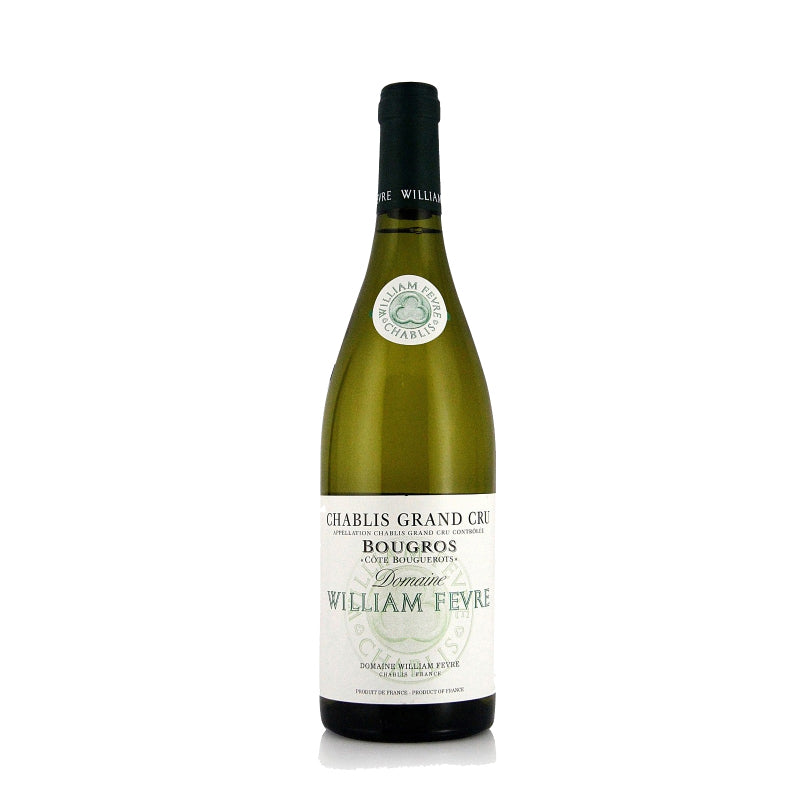Domaine William Fevre Chablis Bougros Cote Bouguerots Grand Cru 2020 750ml
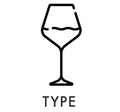



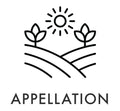

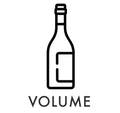

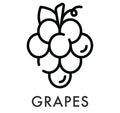

The 2020 Côte Bouguerots is a masterclass in Chablis Grand Cru complexity—described by The Wine Advocate as a “résumé” of Fèvre’s finest sites. It fuses the power of Valmur, the mineral grace of Les Preuses, and the voluptuous texture of Bougros, resulting in a taut, layered wine with a pungently saline finish. With yields as low as 25 hl/ha on vertiginous slopes by the Serein River, Decanter praises its intensity and savory persistence. Burghound notes “almost painful intensity” and huge potential, while Jancis Robinson highlights its Côte d'Or-like stature and long-term promise. It's one of the most complete and age-worthy wines in the domaine's lineup.
The Wine Advocate | RP 96
Published: Jul 21, 2022
Drink: 2030-2050
In a sense, the 2020 Chablis Grand Cru Bougros Côte Bouguerots offers a resumé of several of Fèvre's grand cru bottlings, uniting the taut musculature of Valmur and the ethereal, mineral profile of Les Preuses, with some of the perfumed sensuality of Vaudésir and fleshy texture of Bougros. The result is certainly a very compelling wine, exhibiting aromas of crisp green orchard fruit, white flowers, freshly baked bread, oyster jus and white peach, followed by a full-bodied, taut and layered palate that's seamless and complete, concluding with a pungently mineral finish. It's worth a special effort to seek out, though a decade's patience is warmly advised.
The 2020 vintage makes the first year of official organic conversion for 78-hectare Domaine William Fèvre, though it's actually the 15th year the estate has been practicing organic. Didier Séguier reported that the year's challenges were twofold: having to pick harvest dates with unerring precision, and the necessity to sort out sunburnt grapes. The results, however, are once again exceptional, and it's hard to think of any of Chablis's larger estates that can match Fèvre for consistency and quality across the board. The 2020s, as ever bottled under Diam, are certainly built to evolve gracefully, but they will also show their cards sooner than the spectacular but hyper-concentrated 2019s.
Decanter | D 96
Published: Oct 11, 2021
Drink: 2024-2037
Côte Bouguerots is a cooler site down by the Serein River, with precipitous slopes of 45 degrees. An intense grand cru, with concentration from very low yields (25hl/ha), this displays a distinct savoury edge. It’s a very fine, persistent wine, with a very long future ahead.
Closure: Cork
Body: Medium
Grapes: 100% Chardonnay
Burghound.com | B 96
Published: Oct, 2022
A deft application of wood lurks in the background of the aromas cool citrus, apple, mineral reduction and ocean breeze wisps. There is an almost painful intensity to the powerful but sleek and defined medium weight plus flavors that brim with minerality on the clean, very dry and hugely long finish. This is also potentially brilliant and well-worth considering.
Jancisrobinson.com | JR 16.5+
Published: Jan 10, 2022
Cask sample. Light nose and quite restrained for the moment. Big and bold – almost Côte d'Or build. Set for the long term. Broad, persistent finish.
Williamfevre.fr
VINEYARD
Bougros sits on a very steep slope, with a gradient of more than 30%, facing due south at the foot of the hill. The shallow soil, a mixture of clay and gravel, prevents excessive yields resulting in complex, robust wines.
GRAPE VARIETY: Chardonnay
GROUND OF THE APPELLATION: Clay and gravel
DOMAIN SURFACE: 2.11 hectares
APPELLATION SURFACE: 12.62 hectares
ORIENTATION OF THE PARCELS: South
TASTING NOTE: Complex and mineral bouquet, powerful and dense structure with pleasant roundness.
FOOD/WINE PAIRING: Fish, shellfish and other seafood, grilled or in a cream sauce. Poultry and white meat, grilled or in a cream sauce.
PERFECT PAIRING: Langoustines with truffled artichoke cream.
SERVING TEMPERATURE: Between 12C to 14C
KNOW-HOW
HARVEST: manual.
VINIFICATION: Use of the principle of gravity so as to avoid all pumping, which could harm the quality of the wine. Brief (1? - 2 hours) pneumatic pressing to obtain a gentle separation of the solid and liquid parts of the grape. Very light static settling of the juice to preserve enough fine lees so that the alcoholic and malolactic fermentations can occur naturally. The must is run into French oak barrels (aged of 6 years in average) for 50 to 60% of the harvest. The remainder is vinified in small stainless steel vats.
MATURING: 14 to 15 months, of which 5 to 6 months on fine lees in French oak barrels, for 50 to 60% of the harvest. The end of maturation occurs in small stainless steel vats.

